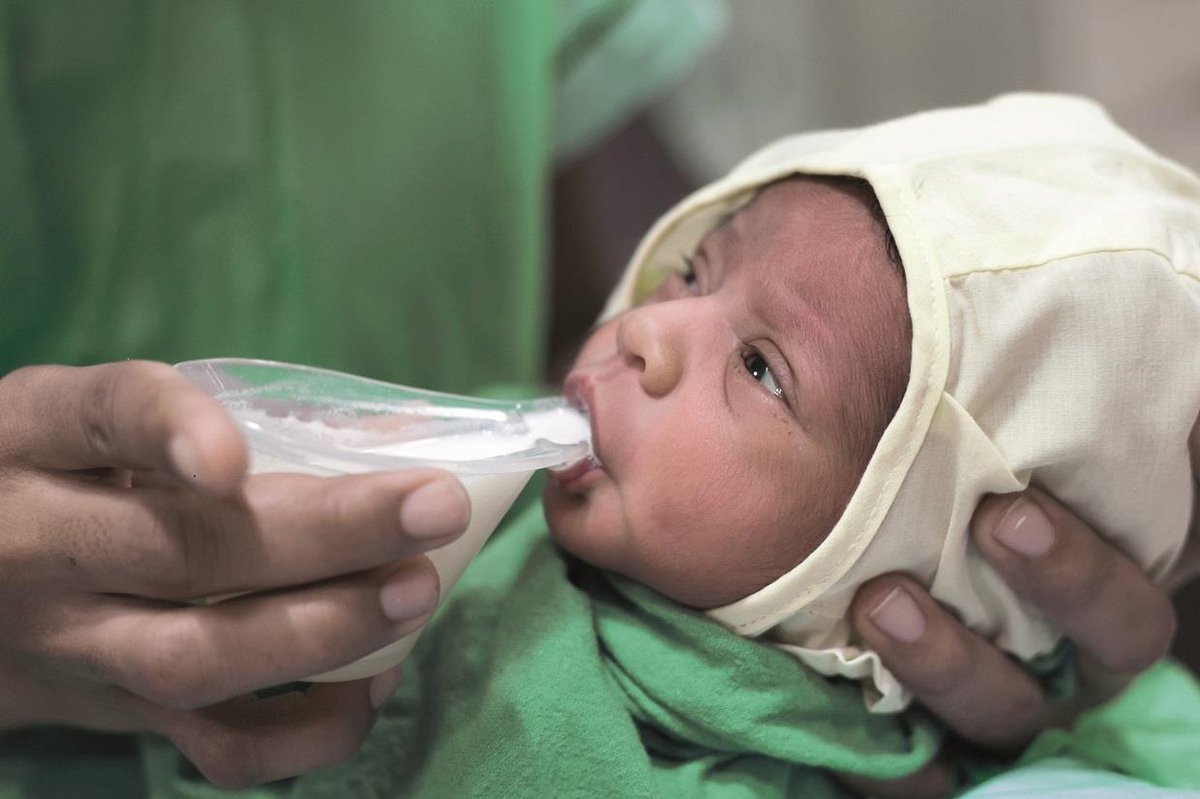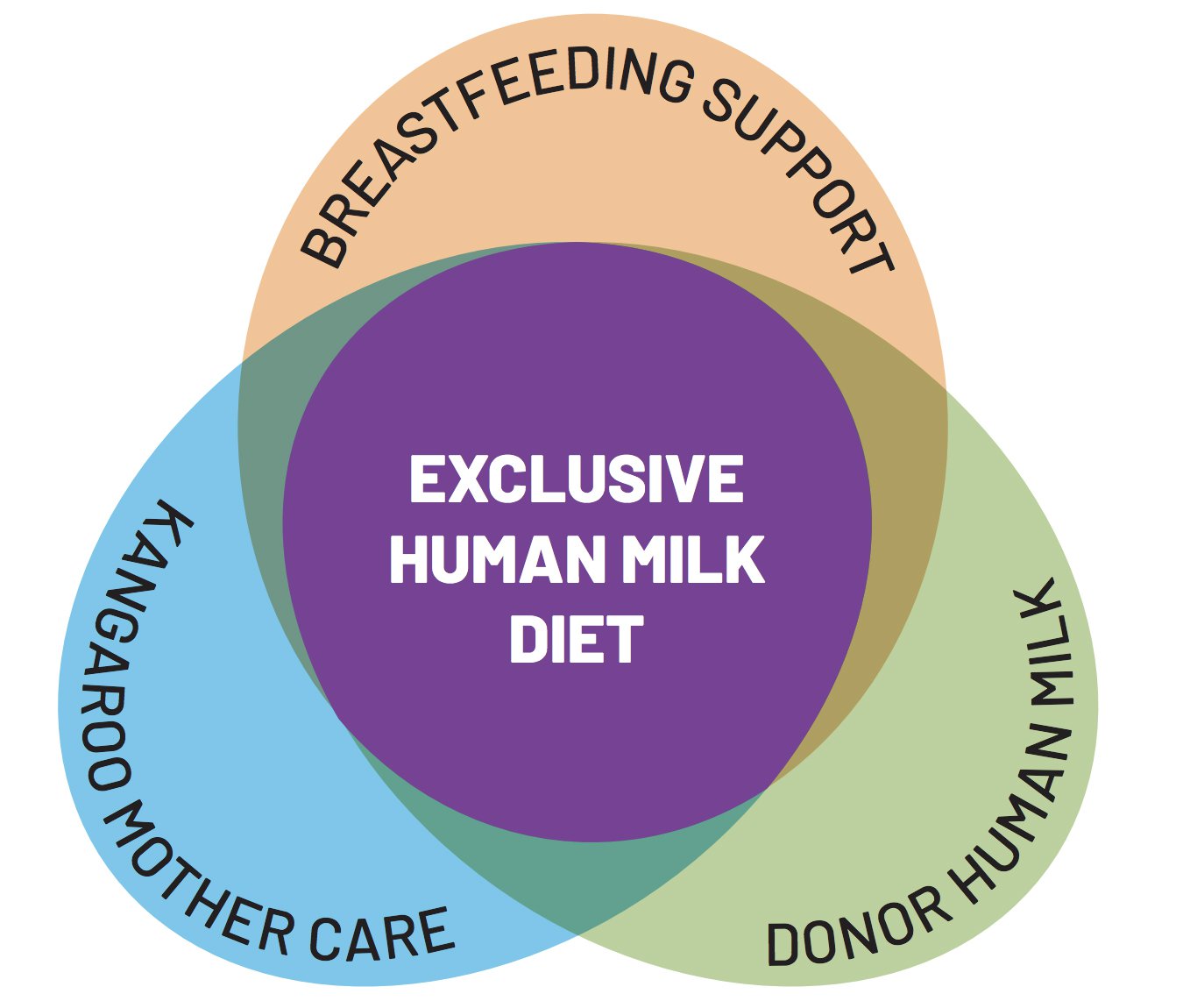
Newborn Nutrition: Increasing Access and Intake of Human Milk
Saving infant lives with human milk
Despite global gains in child health, 4.6 million babies still die in their first year of life—nearly 3 million in the first 28 days.[1] Known approaches could prevent a staggering 71 percent of these deaths, yet strategies to effectively implement and scale these crucial interventions are lacking.
Of all the known approaches, human milk has the greatest potential impact on child survival.[2] Scaling up breastfeeding to a near-universal level could prevent an estimated 823,000 deaths in children under the age of five worldwide every year.[3] It is especially lifesaving in resource-limited settings, where a non-breastfed child’s risk of death is six times that of a breastfed child.[2] Despite these benefits, however, social, political, and structural barriers still hinder the number of babies who receive human milk. PATH, together with governments and partners worldwide, is working to close these gaps.
Protecting every baby
Human milk is especially critical for the estimated 32.4 million babies in low- and middle-income countries (LMICs)—27 percent of live births—who are born sick, low-birthweight, premature, or otherwise vulnerable.[4]
Between 15 and 40 percent of vulnerable babies in neonatal units around the world lack access to their own mother’s milk, often because of maternal illness, death, or abandonment.
For these babies, human milk banks (HMBs) offer a lifesaving alternative to ensure timely access to human milk. HMBs collect, pasteurize, test, and store safe, donated milk from lactating mothers and provide it to infants in need, ensuring that even if babies cannot breastfeed, they still receive human milk as soon as possible. Importantly, HMBs are also key to protecting, promoting, and supporting breastfeeding, ideally positioned to provide lactation support for mothers.

Integrated human milk banks increase infant survival through access to human milk and Kangaroo Mother Care.
Human milk banks as hubs of support
PATH, a global leader in newborn care and nutrition, works with leaders to adapt and implement a comprehensive approach to ensure that all babies are fed human milk.
Following our Mother-Baby Friendly Initiative Plus model (MBFI+), HMBs can serve as welcoming hubs for all mothers. This includes: (1) mobilizing health care workers and communities to support and encourage breastfeeding, (2) providing safe, pasteurized donated milk from HMBs when mother’s milk isn’t available, and (3) enabling women and families to practice Kangaroo Mother Care (KMC), an effective method for infant survival that involves providing skin-to-skin contact to low-birthweight infants in addition to exclusive breastfeeding.
Following the MBFI+ model, HMBs should not only collect, process, and store human milk, but also provide lactation and KMC support. HMBs can be used to engage local communities: promoting the importance of breastfeeding and milk donation. Implemented this way, HMBs have a greater impact: beginning a cycle in which outreach, promotion, and banking help more babies survive and thrive.
Barriers and opportunities
Worldwide, rates of exclusive breastfeeding (39 percent in LMICs)[2] remain far below international targets. Hindrances include social norms, lack of support for breastfeeding mothers, the influence of infant formula manufacturers, and gaps in policies.
HMB programs also face challenges, including limited funding and a lack of tools and systems that clinics in LMICs can use to safely process and test human milk. Banks are also often isolated from one another, impairing their ability to exchange information and leading to inconsistent practice. Perhaps most importantly, there is a lack of global guidance on effective implementation of HMBs, resulting in disparate systems and variations in quality control.
Closing the gap
PATH is closing the gap. Drawing on nearly 40 years of expertise in maternal, newborn, and child health and nutrition, we are increasing access to human milk. Our efforts include:
- Strengthening health systems to integrate human milk banking into newborn care. PATH works with governments and partners in India, Kenya, Vietnam, South Africa, and other countries to build capacity and ownership, develop country-specific integrated HMB guidance, and scale up strategies to promote human milk through breastfeeding and HMBs.
- Improving technologies for quality control systems. PATH is developing affordable, easy-to-use devices to help HMBs operate safely and effectively. For example, our cell phone–based FoneAstra pasteurization monitoring system, developed in partnership with the University of Washington and the Human Milk Banking Association of South Africa, guides workers step by step through donor milk pasteurization.
- Expanding global advocacy, awareness, and communication. As a trusted convener, PATH is working with leaders at the local, regional, and global levels to develop global guidance and prioritize access to human milk in national and worldwide policies.

Effective HMB implementation requires investment by the government to protect, promote, and support breastfeeding.
Our vision for the future
As global leaders rally around the 2030 Sustainable Development Goals, there is an increased need for evidence-based interventions to improve the health and survival of infants and children. Human milk is a crucial ally. PATH, together with our global partners, is at the forefront of efforts to unlock this potential.
Contact us
For more information, please contact Kiersten Israel-Ballard, kisrael-ballard@path.org
References
- Infant Mortality: situation and trends page. World Health Organization (WHO) website. Available from: http://www.who.int/gho/child_health/mortality/neonatal_infant_text/en/. Accessed May 5, 2016.
- UNICEF. Adopting optimal feeding practices for Child Survival. http://data.unicef.org/nutrition/iycf.html#. Accessed June 28, 2016.
- Victoria C, Bahl R, Barros Aluício JD et al. Breastfeeding in the 21st century:epidemiology, mechanisms, and lifelong effect. The Lancet. 2016; 387(10017):475-490. doi: 10.1016/S0140-6736(15)01024-7.
- Lee A, Katz J, Blencowe H, et al. National and regional estimates of term and preterm babies born small for gestational age in 138 low-income and middle income countries in 2010. Lancet. 2013;1:e26–36. doi: http://dx.doi.org/10.1016/S2214-109X(13)70006-8.


